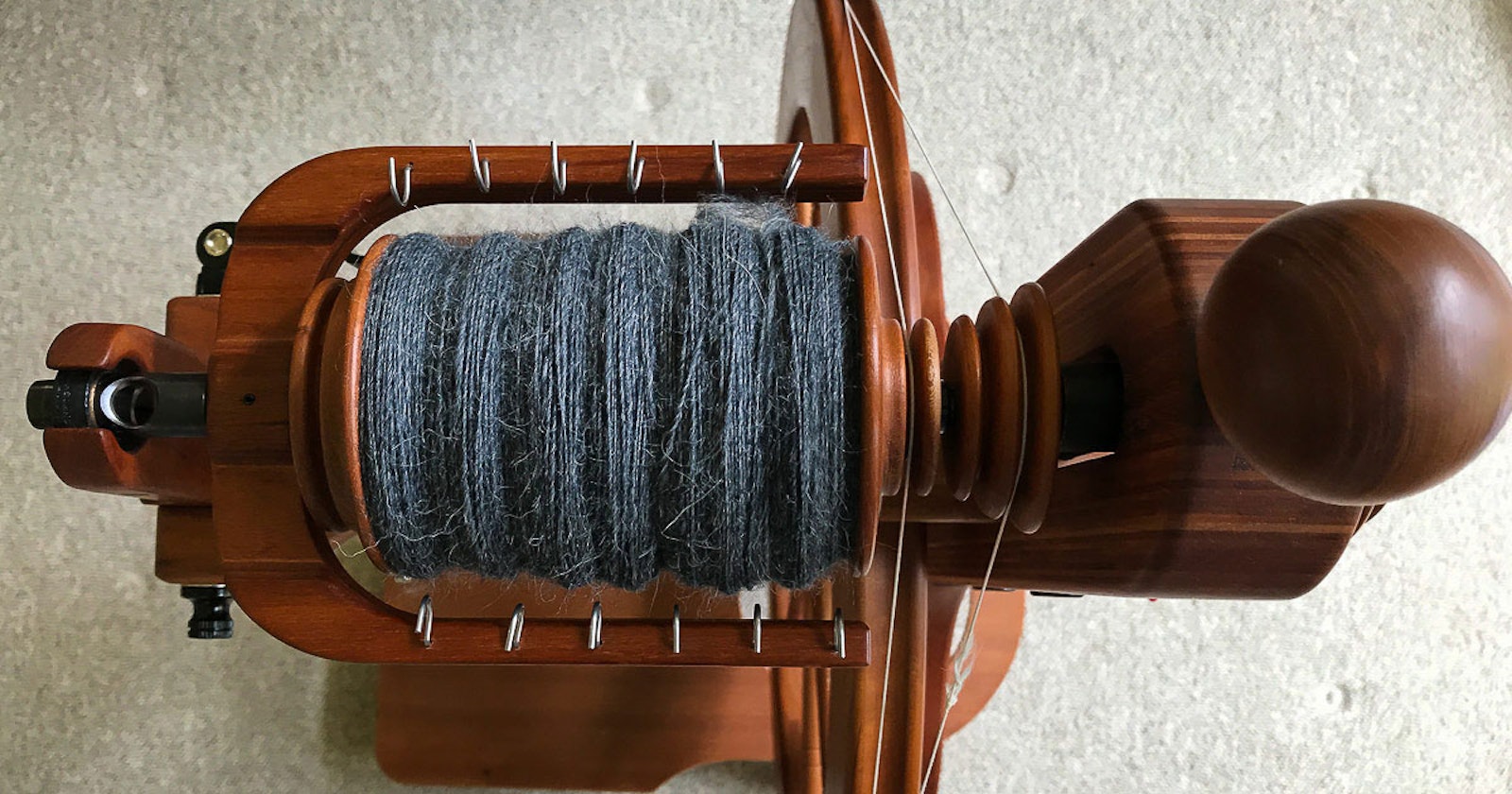When I first joined Interweave in 2005, I wasn’t yet a spinner. It may surprise you that the editor of Spin Off may have been spinning for less time than you, but it’s been quite a journey. (I’ll tell you how I learned to spin later, but that’s not the reason for this post.)
About a year into my tenure as an editor in the books department, I’d learned to spin a bit and I met Judith MacKenzie for the first time. There’s something unique about meeting Judith: despite the hubbub that sometimes surrounds her, Judith herself is soft-spoken, utterly present, and completely focused on the person she’s speaking to. Interweave had been talking to her about writing a book, and I put my hand up to be its editor.
Judith demonstrates her “wolf yarn,” the yarn that kept the wolf from the door in her years as a production handspinner. Photos by Ann Swanson
In the process of editing that book, The Intentional Spinner, I not only learned about spinning yarn, I developed a new sense of wonder about textiles and the world around me. Here are some of the things I learned.
- Although scientists have been trying for years, they have been unable to replicate the crimp structure of wool. There is truly nothing like a sheep.
- Rayon has been around longer than you might think—since the nineteenth century—and it’s actually made of plants. Bamboo and Tencel are both related to rayon, also known as viscose, though Tencel is made with a process that is far more environmentally friendly.
- It is not a sin—in fact, it’s often a good idea—to get out your scissors and cut very long lengths of wool or silk for spinning.
- You can make huge changes in your yarn by just changing the tension on the brake band of your spinning wheel.
- Spinners have made yarn from true sea silk—mollusk fibers. (There is said to be only one woman alive, Chiara Vigo of Sardinia, who still knows how to do it. The BBC wrote about her in 2015.)
- Art yarn is also an ancient thing; feathered yarns have been part of decoration and ceremony.
- It’s not the flying clothes moths that get you. It’s the teeny larvae.
The Intentional Spinner has been available in several versions throughout the years, and we’re so pleased to bring it to you as an eBook. I hope you’ll discover gems of spinning lore, brand-new-to-you techniques, and a solid grounding in the fundamentals in its pages.
A woolen long draw is a beautiful thing to behold.
My Spinning Story
So, how did I become a spinner? Less than a month after I started, Interweave had its then-annual charity silent auction and raffle. The raffle items were a session of holistic bodywork, a beginning spinning class, and an extra day of vacation. Being brand-new, I put all of my raffle tickets in the vacation pot, but I also told my colleague, “I know about spinning. I did it at the gym.”
Yes, I was one of those people.
The winner of the spinning class was Amy Clarke Moore, then editor of Spin-Off. Everyone in the room laughed, and it dawned on me that I’d been kind of dense. She obviously didn’t need a beginning spinning class, but she said, “You can always learn something from Maggie Casey.” I told Amy the story, and without missing a beat, she said, “Do you want to take the class instead?”
A year later, Maggie Casey started writing her book Start Spinning. I’d bought my first spinning wheel and begun my journey. Those three spinners, Amy, Maggie, and Judith, enriched my life immensely. Spinning and spinners are like that.
Anne Merrow Editor, Spin-Off



